Contents
What is it?
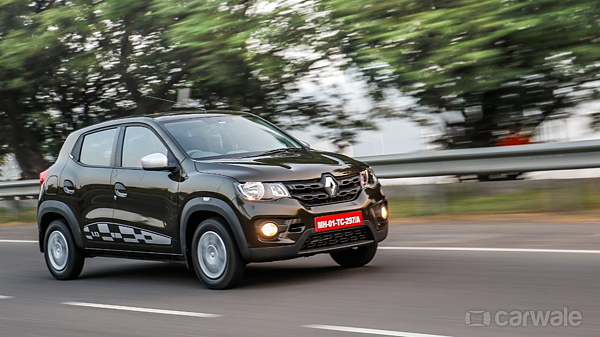
This, the new Renault Kwid AMT, is possibly the last chapter in the current Kwid’s evolution story. The story itself mirrors that of the high-selling Alto quite closely: First there was the 800cc, then the 1-litre came along, and now there’s the 1-litre with the AMT ‘box.
And, we must say, this one is special. Sure, it has its shortcomings, but as a package for first time car buyers, it does more right than wrong.
Now, if we were to talk visual changes, there are hardly any compared to the Kwid 1.0. The AMT gets the same colours, silver ORVM housings, and the same chequered flag graphic on the doors. The only way to tell the Kwid AMT apart is the Easy-R badging on its tailgate.
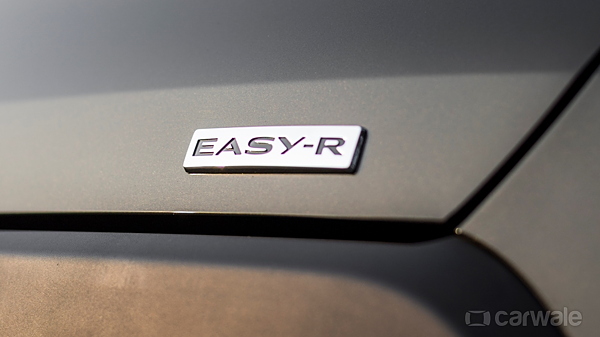
So, what you still have is an entry-level car with acceptable shut lines, a good paint finish, and that mini SUV posturing we Indians love so much.
How is it on the inside?
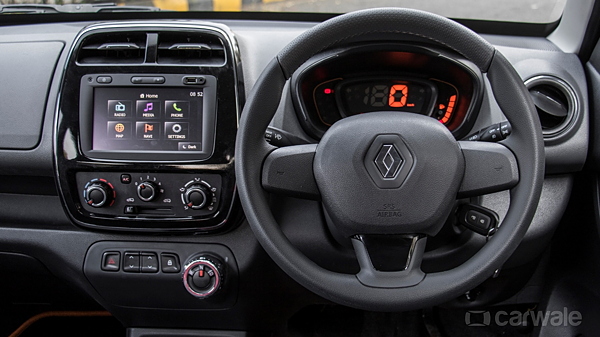
Not much has changed on the inside either. The Kwid AMT still gets the same dashboard, twin gloveboxes, digital clocks, and in this top of the line RXT trim, the touchscreen central display that incorporates the stereo, Bluetooth connectivity and navigation. Storage capacity of the door pockets remains impressive, and because Renault has completely gotten rid of the gear stick, there’s additional bottle storage on the front central tunnel.
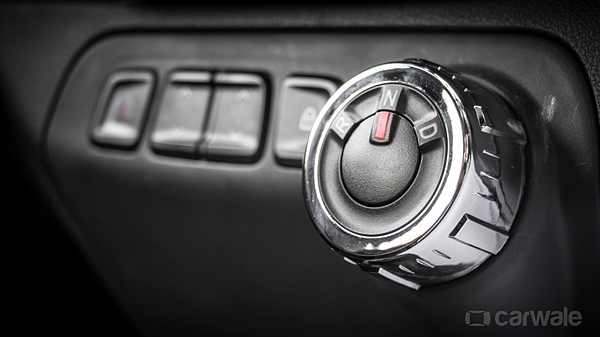
Instead of the gear stick, the Kwid AMT gets a rotary dial as part of the centre console alongside the buttons for hazard, front power windows and to lock / unlock the doors. The AMT dial looks chunky and has three settings – N for neutral, R for reverse and D for drive. It is ergonomically placed and is easy to read from the driver’s seat too. But, we thought turning the dial clockwise should have selected D instead of R; that would have been logical functioning.
How does it drive?
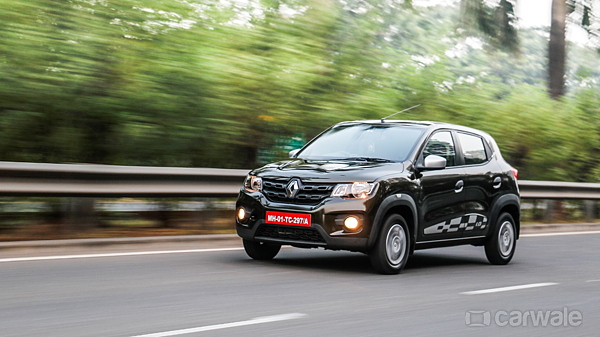
The Renault Kwid AMT uses the same engine and gearbox combo as the 1-litre version. The engine is a three-cylinder 999cc petrol unit that makes 67bhp and 91Nm of torque. It is still quiet and refined at low revs and a bit tinny sounding when you give it the stick. And, it still revs reasonably quickly. The only difference is that a set of hydraulic actuators and sensors do the clutching and shifting of gears on the five-speed ‘box for you in the former.
Now, in typical AMT style, the shifts aren’t exactly seamless, but the shift shock compared to many other AMTs we have driven, is lesser. The throttle response from a standstill is also predictive, linear and non-abrupt. And when driven with a light throttle, the Kwid AMT goes about upshifting in a quiet and absolutely nonintrusive fashion. It is only when you get on the gas hard that the lag in shifts – both up and down the gearbox – become more obvious.
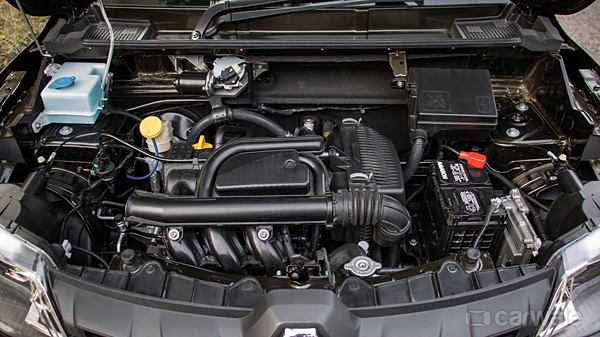
But, one big shortcoming of the AMT on the Kwid is the lack of creep function. It might make starts on a flat surface less jerky, but even the slightest gradient is bound to cause inconvenience to new drivers as they fight a car rolling off in the exact opposite direction of their intended travel.
The other issue is the lack of manual override. Almost every AMT comes with one wherein the driver can select the gear of his/her choosing. And, it’s there for a reason. It helps with the engine braking especially when negotiating twisties coming downhill. It also allows you to hold a gear around corners for better stability and control. On the Kwid though, you just rely on the mechanical brakes. And pray that the decline isn’t long, steep and relentless; otherwise chances are, not only would one end up overheating the brakes; the wear will be exaggerated too.
On other drive fronts, the Kwid AMT is near identical to its manual twin. The ride quality is plush at low speeds with a gentle, rounded edge to the suspension’s absorption ability; there’s barely any noise that seeps inside the cabin; and the side-to-side movement over badly surfaced roads is barely noticeable.
Handling wise, the Kwid retains its light and quick turn-in along with some body roll and a steering that’s devoid of feel. And, thanks to its narrow tyres, entering corners too hot only yields understeer. We also found the car’s inability to hold on to a gear while applying progressive throttle around a bend, a tad unsettling.
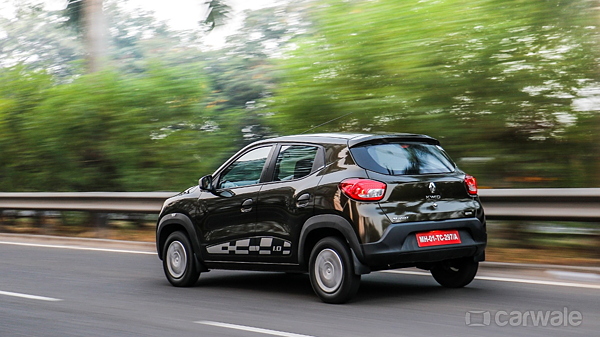
As far as numbers go, the Kwid AMT takes 16.5 seconds to hit 100kmph from a standstill, while it covers the 20-80kmph and 40-100kmph kickdowns in 8.8s and 12.4s, respectively. To put things in perspective, the Alto K10 AMT is a second quicker to 100kmph, but takes an additional second over the Kwid AMT’s time to complete the 20-80kmph kickdown. Times for the 40-100kmph kickdown, meanwhile, are near identical for both cars with the Alto AMT taking 12.3 seconds to complete the run. So, clearly on the performance front, the two are pretty evenly matched.
Should I buy one?

If it is your first car, and you haven’t experienced a torque converter or dual clutch automatic before, the Kwid AMT will prove both easy to drive and agreeable to own. The gearshifts aren’t jerky, the throttle is linear and responsive, and thanks to the 1-litre engine, it is also energetic to drive in the city. We haven’t tested it for fuel economy yet, but we expect it to return efficiency figures matching the manual Kwid 1.0. What’s more, it carries over the highlights of the Kwid: a light steering, a plush low speed ride and clear visibility.
Where does it fit in?
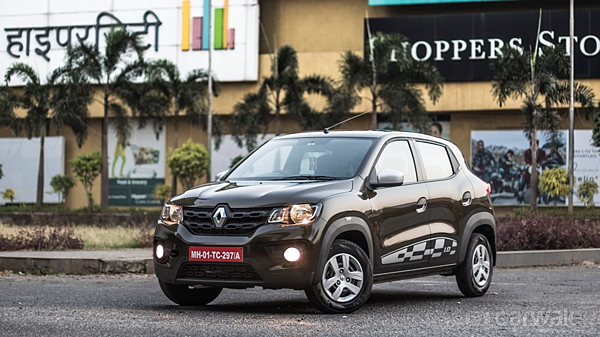
As with the manual versions of the 800cc and the 1-litre Kwid, which go head-to-head against versions of the Maruti Suzuki Alto and the Hyundai Eon, the Kwid AMT too is a direct competitor to the Alto K10 AMT. Price really isn’t the deciding factor here and neither is the flat out performance. What matters is which AMT makes easier work of traffic. And which of the two is easier to live with on a day-today basis. Answers to that will follow soon in our comparison test.
Note: Renault Kwid 1.0 AMT test figures carried in this story are representative and not up to CarWale Road Test standards as these were clocked at a different location.
source”cnbc”